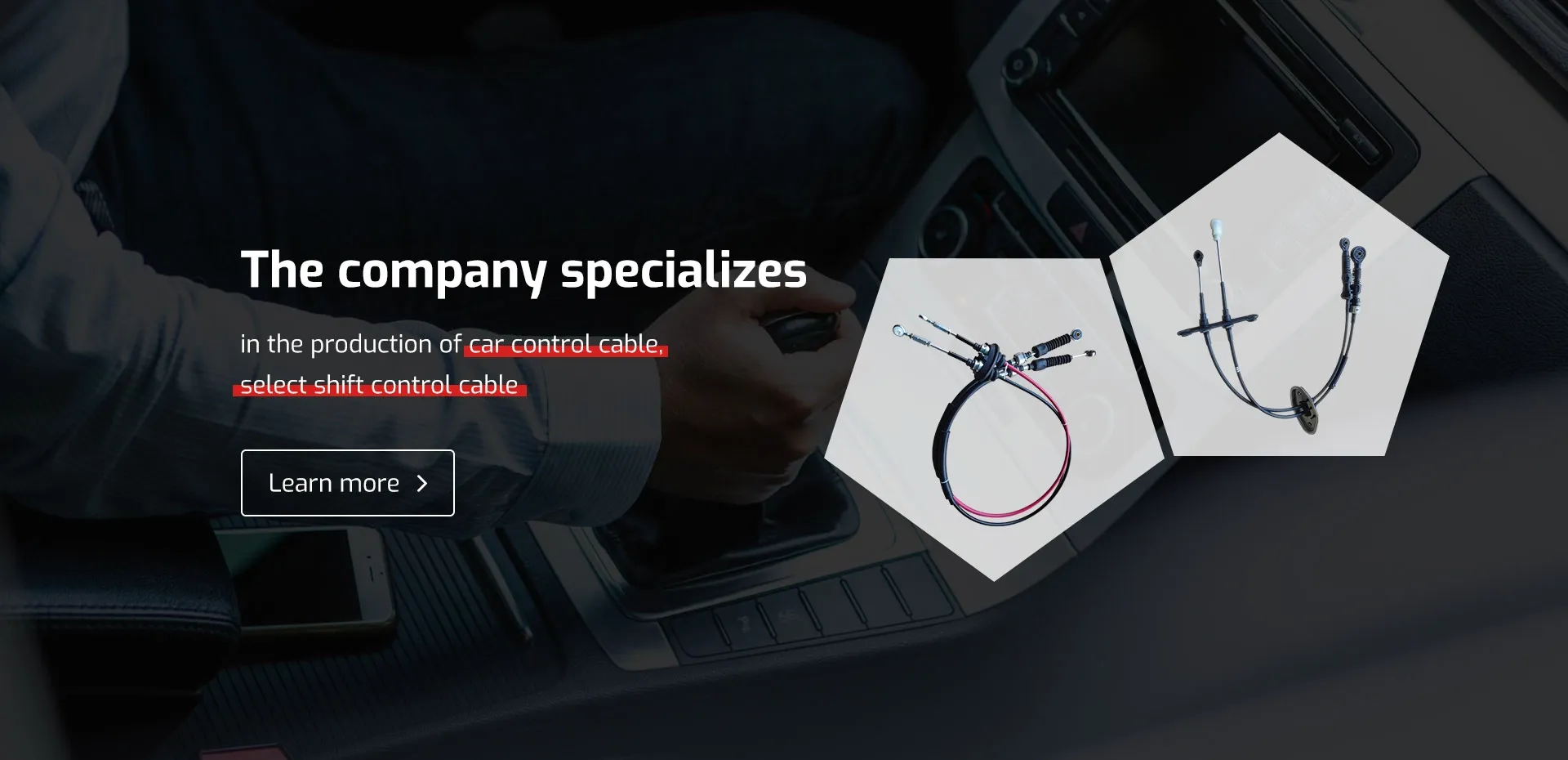universal throttle control cable
Understanding Universal Throttle Control Cables Functionality and Importance
In the realm of automotive and machinery design, throttle control cables serve as vital components for ensuring precise control over engine speed. Among the various types available, universal throttle control cables stand out due to their adaptability and ease of use across a range of applications. This article delves into the functionality, importance, and considerations when selecting universal throttle control cables.
What are Universal Throttle Control Cables?
Universal throttle control cables are flexible, cable-like devices designed to connect the throttle pedal (or lever) to the engine's throttle body. They play a critical role in regulating the air-fuel mixture entering the engine, which in turn affects the vehicle's power output and responsiveness. The term universal implies that these cables can be used in various vehicles and machinery types, making them a versatile choice for manufacturers and mechanics alike.
Functionality of Throttle Control Cables
The fundamental principle behind throttle control cables is relatively straightforward. When the driver presses the throttle pedal, the cable transmits this action to the throttle body, which opens to allow air into the engine. This process is essential for accelerating the vehicle and maintaining optimal engine performance.
In modern vehicles, throttle control has become more sophisticated, with many systems transitioning to electronic throttle control (ETC). However, traditional mechanical systems still rely heavily on throttle control cables. In these systems, the cables must endure various forces, including tension, compression, and friction, without compromising performance.
Importance of Quality Cables
The quality of a throttle control cable can significantly influence the overall performance of a vehicle. A well-manufactured cable ensures smooth operation, minimizing lag or unresponsiveness in acceleration. Conversely, faulty or low-quality cables can lead to a host of issues, including inconsistent throttle response, difficult gear shifting, or even engine stalling.
Moreover, the material and construction of universal throttle control cables are critical factors to consider
. Typically, these cables are made from high-grade stainless steel or other durable materials that can withstand environmental factors like heat, humidity, and corrosion. A protective sheath often encases the cable, further enhancing its durability and lifespan.Choosing the Right Universal Throttle Control Cable
universal throttle control cable

When selecting a universal throttle control cable, several considerations should be kept in mind
1. Length and Fitment It's essential to choose a cable that fits the specific requirements of your vehicle or machinery. Measure the required length meticulously to ensure proper installation and functionality.
2. Material Quality Look for cables constructed from high-quality materials to guarantee longevity and performance under varying conditions.
3. Flexibility A good throttle cable should exhibit excellent flexibility to ensure smooth operation without kinks or bends that could impede functionality.
4. Return Mechanism Universal throttle cables often come with return springs or mechanisms that assist in returning the throttle to its idle position. Ensure that these components are included and functioning properly.
5. Compatibility While these cables are marketed as universal, it's crucial to confirm compatibility with your specific model. Some may be more suited to certain applications than others.
Installation and Maintenance Tips
Installing a universal throttle control cable can generally be done with basic mechanical skills. However, proper installation is crucial for optimal functionality. Follow the manufacturer’s guidelines closely, and ensure that the cable is routed correctly to prevent unnecessary wear or tangling.
Regular maintenance is equally vital. Periodically inspect the cable for signs of wear, fraying, or corrosion. Lubrication may also be necessary to keep the cable moving smoothly. Timely replacement of a deteriorating throttle cable is essential for maintaining vehicle safety and performance.
Conclusion
Universal throttle control cables are indispensable components in both vehicles and machinery, providing the essential link between the driver’s intentions and the engine's performance. Understanding their functionality, maintaining high-quality standards, and ensuring proper selection can lead to enhanced vehicle performance and the safety of its operations. Whether you're a DIY enthusiast or a professional mechanic, recognizing the significance of these cables is crucial in delivering optimal results in motor performance and responsiveness.
-
Workings of Clutch Pipe and Hose SystemsNewsJun.04,2025
-
The Inner Workings of Hand Brake Cable SystemsNewsJun.04,2025
-
The Secrets of Throttle and Accelerator CablesNewsJun.04,2025
-
The Hidden Lifeline of Your Transmission Gear Shift CablesNewsJun.04,2025
-
Demystifying Gear Cables and Shift LinkagesNewsJun.04,2025
-
Decoding Clutch Line Systems A Comprehensive GuideNewsJun.04,2025
